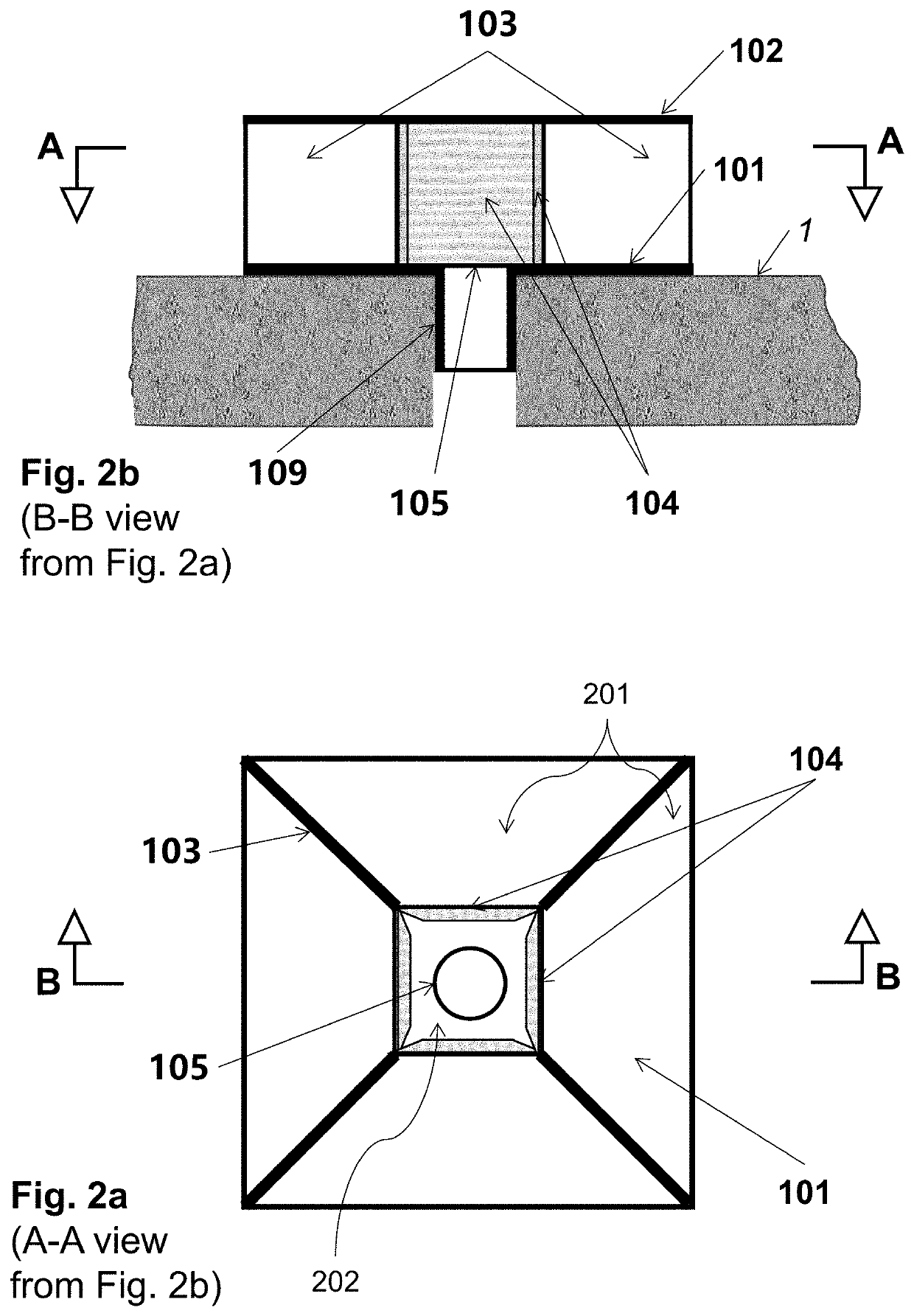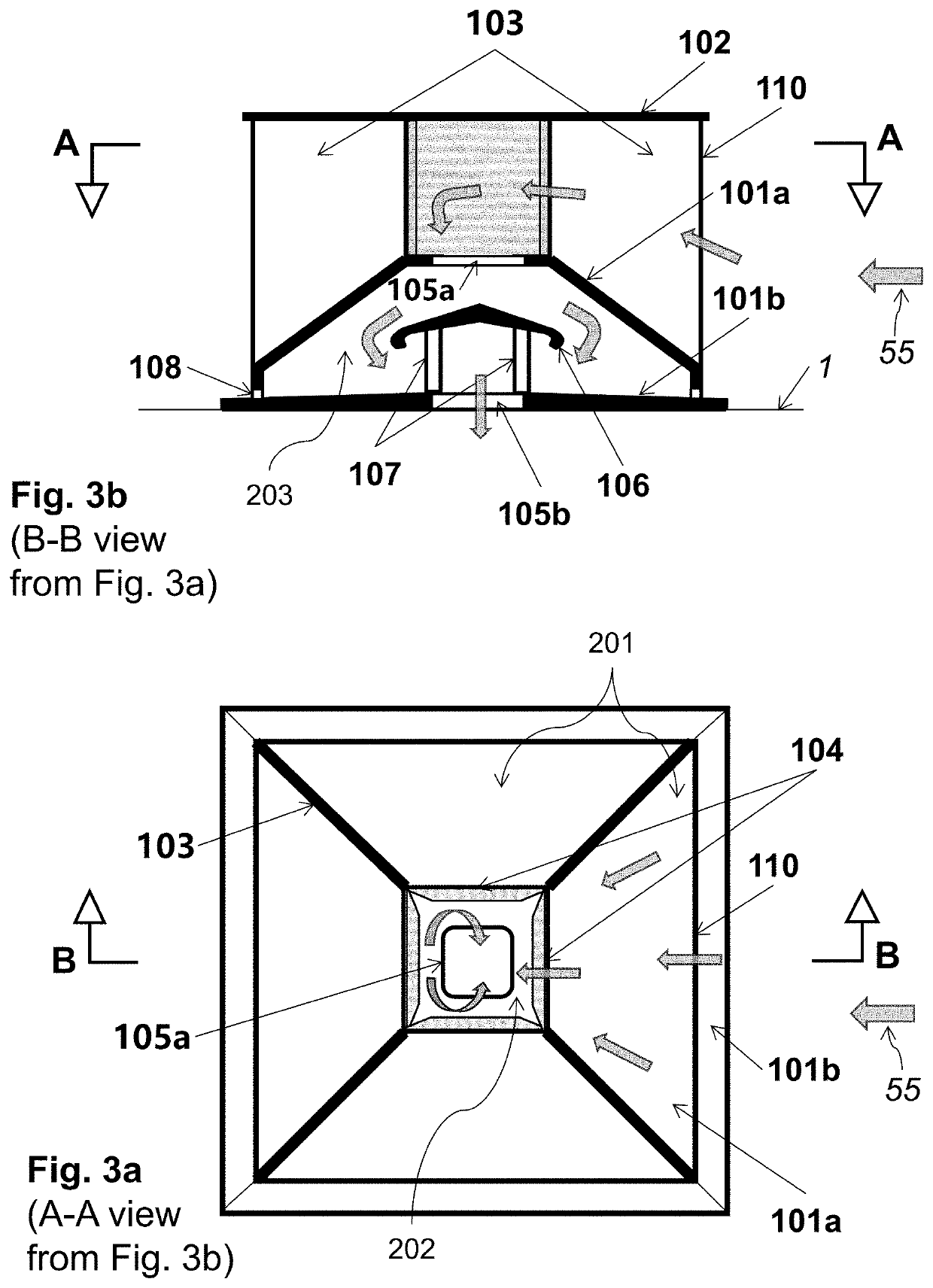Wind Pressure-Driven Air Intake Device
a technology of air intake device and air intake valve, which is applied in the direction of lighting and heating apparatus, ventilation system, heating type, etc., can solve the problems of lack of prior art, lack of disclosure, general lack of structural features and mechanisms, etc., and achieves the effects of low manufacturing cost, zero power consumption, and convenient installation
- Summary
- Abstract
- Description
- Claims
- Application Information
AI Technical Summary
Benefits of technology
Problems solved by technology
Method used
Image
Examples
Embodiment Construction
[0021]One embodiment of the general concept has been depicted in FIGS. 1a and 1b, where abutting wind collectors 201 are all arranged to lie between two planar surfaces. Nevertheless, they can be arranged in other fashions according to the spirit of this invention, for example, collectively forming a cube, a spherical or part-spherical body, with some tunnels' longitudinal axes oriented out of plane, say outwardly upwards, or even downwards (if the collective body is raised from a mounting surface with an elongate hollow support that also serves as a conduit for air flow, depending on the use scenario). However, for uses on an open surface, whether a rooftop or a wall, a coplanar or in-plane arrangement is considered more cost effective due to its relative simplicity, since wind flow around a building, or around any enclosed object, is primarily along or in parallel with the building's surfaces, and off-surface or off-plane wind collectors can make contributions only in a very limit...
PUM
 Login to View More
Login to View More Abstract
Description
Claims
Application Information
 Login to View More
Login to View More - R&D
- Intellectual Property
- Life Sciences
- Materials
- Tech Scout
- Unparalleled Data Quality
- Higher Quality Content
- 60% Fewer Hallucinations
Browse by: Latest US Patents, China's latest patents, Technical Efficacy Thesaurus, Application Domain, Technology Topic, Popular Technical Reports.
© 2025 PatSnap. All rights reserved.Legal|Privacy policy|Modern Slavery Act Transparency Statement|Sitemap|About US| Contact US: help@patsnap.com



